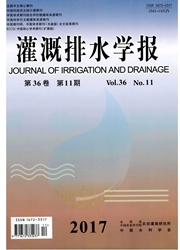

 中文摘要:
中文摘要:
运用电磁感应仪EM38,结合GIS技术和地统计方法对长江河口地区典型地段土壤含盐量的空间变异性进行研究。结果表明,3个研究区土壤盐分含量的变幅有较大差异,其中以寅阳镇为最大,其次为大兴镇,北新镇土壤盐分变化幅度最小;各研究区土壤盐分含量均符合正态分布且均属于中等变异强度;各研究区的土壤盐分含量均表现为强的空间相关性,寅阳镇和北新镇土壤盐分含量半方差函数均符合球状模型,大兴镇土壤盐分含量半方差函数为指数模型。Kriging插值结果表明,各研究区土壤盐分的空间分布均呈现出条带状和斑块状格局;从空间尺度上来看,研究区土壤盐分南部高于北部;3个研究区土壤盐分含量具有明显的差别,寅阳镇土壤盐分含量明显高于其他2个镇,北新镇土壤盐分含量最低。
 英文摘要:
英文摘要:
Electromagentic induction EM38 was applied to study the spatial variability of soil salinity with the help of GIS and geostatistics,which was performed in typical sectors of Yangtze river estuary.The results showed that soil salinity vary extent of three areas had considerable difference,the biggest vary extent was in Yinyang town,followed by Daxing town,and the last was Beixin town.The soil salinity of three area all had a Normal Distribution and exhibited moderate spatial variation,and all study areas showed strong spatial dependency.The spherical model was fitted to the semi-variograms of soil salinity at Yingyang and Beixin town,and the exponential model was fitted to Daxing town.The spatial distribution maps interpolated by Kriging interpolation showed that soil salinity spatial variability of the three areas all exhibited banded and plaqued pattern;the study areas soil salinity were higer in the south than north from the spatial scale;the soil salinity content of three areas showed sharp distinction,and the Yinyang town apparently higher than other two towns,the lowest was the Beixin town.
 同期刊论文项目
同期刊论文项目
 同项目期刊论文
同项目期刊论文
 期刊信息
期刊信息
